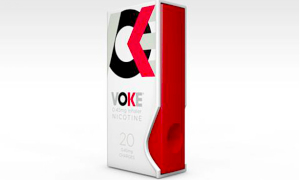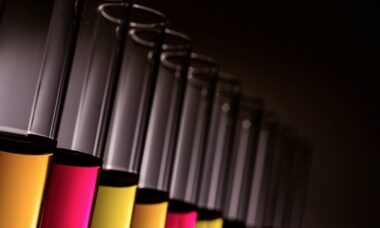
UK parliament’s tech committee prepares to investigate e-cig science
15th March 2017 - News analysis |
A UK parliamentary select committee is to launch an investigation into the science behind e-cigarettes.

A UK parliamentary select committee is to launch an investigation into the science behind e-cigarettes.

Recent reports of high failure rates among e-cigarette chargers tested by authorities in Wales highlight the need for vigilance by manufacturers to ensure their products meet safety standards.

British American Tobacco has ceased its involvement in the commercialisation of the medically licensed Voke nicotine inhaler.

The U.S. Food and Drug Administration (FDA) is to hold a workshop on battery safety to learn more about the risks of malfunctions in e-cig power sources and how to prevent them.

May 2016 brought the two biggest regulatory developments in the short history of the e-cigarette so far. But the U.S. deeming regulations and European TPD were far from the only stories brought to you by ECigIntelligence in another year of rapid change…

A manufacturer has developed a new synthetic nicotine test that it says shows concerns about a number of rival products.

Philip Morris International has expressed optimism about the entire reduced-risk products sector as it launches a new trial of its Mesh closed-system e-cigarette in the UK city of Birmingham.

Philip Morris International (PMI) this week submitted its iQOS technology for approval as a reduced-risk product by the U.S. Food and Drug Administration (FDA), a strategy which if successful would provide a tremendous boost to the credibility of heat-not-burn and perhaps pave the way for PMI’s partner Altria to dominate that market in the United States.

Medical research has begun to reveal how e-cigarettes could help to prevent or lessen the potentially dangerous weight gain experienced by many people when they give up smoking.

This report is a brief overview of some of the key heated tobacco and hybrid products that are already on the market or are soon to be launched, including data on sales volumes and details of launch plans.

Opponents of animal testing are worried that the U.S. deeming regulations for e-cigarettes will lead to the industry conducting more scientific research on live animals.

BAT says its Glo heat-not-burn product will be available in Japan from mid-December. It is running a test trial in one city before launching the product nationwide.

A growing number of reported e-cigarette battery incidents is leaving the industry facing a serious problem despite the low statistical probability of an event happening.

The regulatory status of heat-not-burn (HnB) products in Europe remains unclear, despite an increasing number coming to market.

This report examines the regulation of heat-not-burn (HnB) or heated tobacco products in Europe, as well as some of the broader regulatory issues that they raise. It considers their treatment under the TPD; the question of whether they are smoking or smokeless products; and issues such as labelling, advertising and taxation. A detailed case study focuses on Italy.

The U.S. Food and Drug Administration (FDA) has confirmed that some unapproved e-cigarettes can be used in scientific research as long as their makers meet the deadlines for compliance.

Barely a year after the Reynolds American takeover of Lorillard, the U.S. tobacco industry may face another upheaval as British American Tobacco (BAT) bids to buy Reynolds itself.

French standards body AFNOR has developed a standard for analysing e-cigarette emissions, which is likely to become widely adopted across Europe.

Japan Tobacco International (JTI) wants to know whether tobacco shelves in stores can easily be modified to accommodate e-cigarettes.

Pax Labs has appointed a new chief executive officer (CEO) imported from the online music sector and is considering further international expansion as a way to maintain its ability to innovate in the e-cig sector. Tyler Goldman will take over from James Monsees as CEO of the company, which makes Juul e-cigarettes and the Pax line of vaporisers. Monsees, a » Continue Reading.

The EU’s Tobacco Products Directive (TPD) demands that manufacturers supply information on the ingredients and components of e-cig products, as well as testing ingredients and carrying out toxicological assessments – but it is vague on the detail of what to test and how. More clarity has been forthcoming from the European Commission (EC), however, with guidance on its expectations for testing.

Touchscreens on e-cigs could become widespread as manufacturers look for new ways to improve user experience and differentiate from the competition.

Nicoventures, the e-cig arm of British American Tobacco (BAT), is putting together a proprietary “toolbox” of pre-tested flavour ingredients for e-liquid to help it deal with the world’s rapidly changing regulatory frameworks.

UK nicotine product specialist Nerudia has successfully secured a licence to manufacture pharmaceutical e-cig products.

This page provides you with links to all ECigIntelligence coverage of the EU Tobacco Products Directive (TPD) since 1st January this year.

Essential facts about the new EU Tobacco Products Directive and its rules for e-cigarettes, which come into practical effect on 20th May 2016.

E-cigarette designers may have found a way around the restrictions on maximum e-liquid tank size in the EU’s Tobacco Products Directive (TPD).

The first meeting of an ISO standards committee covering e-cigarettes will take place on 24th October in Osaka, Japan.

The European Commission (EC) has issued rules on e-cigarette refill mechanisms which all manufacturers will have to follow for products sold in the EU.

While most of the European e-cigarette industry’s attention is focused on the imminent regulatory upheaval brought about by the EU Tobacco Products Directive (TPD), another set of compliance requirements are also growing in number – those dictated by voluntary standards.

With only weeks to go before the measures of the EU’s Tobacco Products Directive (TPD) start to come into legal effect, ECigIntelligence’s European regulatory analysts have identified the major tasks facing e-cigarette companies.

Executive summary The growth of e-cigarette popularity has been accompanied by a growing number of patent applications and disputes. The World Intellectual Property Office (WIPO) registered more than 1000 patents with the word “electronic cigarette” in the title. Patents aren’t efficient on their own – they should be combined with other IP tools that work together to » Continue Reading.

ECigIntelligence’s evaluation of the interconnected value chains in the U.S. e-cigarette and vapour markets begins with the overly saturated, intensely competitive, and highly lucrative e-liquid segment. This report takes an overview of 2015 Vape Shop Index findings on the top revenue-generating e-liquid brands sold through bricks-and-mortar retail locations across the U.S.

Fontem Ventures has signed a patent licensing agreement with Spark Industries, bringing to an end another of Fontem’s disputes over intellectual property in the e-cigarette industry.

The continuing disputes in Indiana over new regulatory requirements for e-liquid manufacturers may be defused by two bills just introduced in the state’s legislature.

Reynolds American, the second-largest U.S. tobacco firm, has set up a subsidiary devoted to e-cigarettes and other next-generation nicotine products.

Medical licensing of an e-cigarette seems to have been decisive in swinging the favour of Britain’s pharmacists toward vaping.

E-cigarette manufacturers may have a choice of mechanisms for safe refilling of their products under the European Union’s Tobacco Products Directive (EU TPD).

The U.S. Senate has approved a bill to require child-resistant packaging on liquid nicotine offered for sale.

Are big tobacco companies starting to favour heat-not-burn technology over e-cigarettes? While none has shown any signs of overtly stepping away from e-cigs, and such a move is unlikely, much enthusiasm and investment within the tobacco industry seems to be going toward heat-not-burn.

The e-cigarette world in 2016 will be overshadowed by regulation. But the story will not just be about compliance. The market and the products themselves are rapidly evolving even without the influence of law-makers. So requirements like the TPD and the deeming regulations merely add a further twist to an already complex outlook.

Fontem and NJOY have reached a settlement for ongoing patent disputes in the U.S. and Germany.

Executive summary • Introduction • Why an electronic nicotine delivery system (ENDS) product requires a PMTA: distinction among ENDS products, components/parts, and accessories; three pathways to market approval; concerns about the grandfather date • Guidance for industry: information on premarket tobacco product applications (PMTA) and the submission process • Public health considerations: scientific evidence, comparative analysis, voluntary restrictions on sale and distribution, nicotine exposure warnings, child-resistant packaging, alternatives to new scientific studies, government-sponsored databases, non-U.S. randomised controlled clinical trials, literature reviews or reports • FDA enforcement for manufacturers and retailers: enforcement limited to finished tobacco products; independent vapour shops considered as tobacco product manufacturers • Appendix 1: definitions • Appendix 2: submitting a PMTA

James Higgs of Nicoccino shares his views on marketing, regulation, and education.

Philip Morris International (PMI) is testing its iQOS heat-not-burn product in Russia, ECigIntelligence has confirmed.

European standards for e-cigarettes and e-liquids could be in place within two years.

Regulators should set a standard methodology for the pharmacokinetic tests that measure how much nicotine is in vapers’ or smokers’ blood, say scientists at British American Tobacco (BAT).

39 U.S. states and the District of Columbia have laws that legalise and/or decriminalise marijuana use or possession to various extents. E-cig companies are well positioned to enter the emerging marijuana market because of their technical expertise and intimate knowledge of the science behind vaporisers, and several types of cannabis-compatible vaporisers, or “c-cigs”, may succeed in the U.S. market.

The number and strength of chemicals absorbed in the blood of e-cigarette users is dramatically lower than in those who smoke tobacco, according to a new test of exhaled breath.

Looking like a regular cigarette is an advantage for e-cig products aiming to poach users away from tobacco, new research suggests.
Get 7 days of FREE platform access: Demo our data contents without commitment
"*" indicates required fields
Notifications